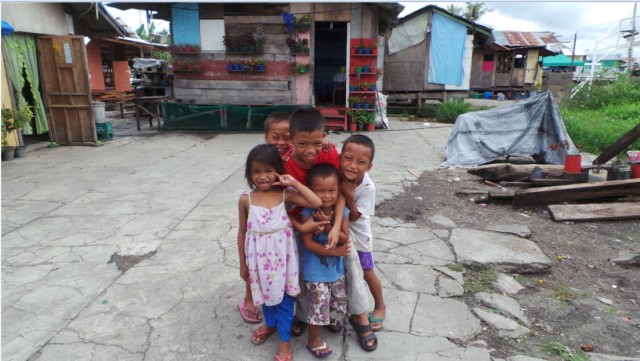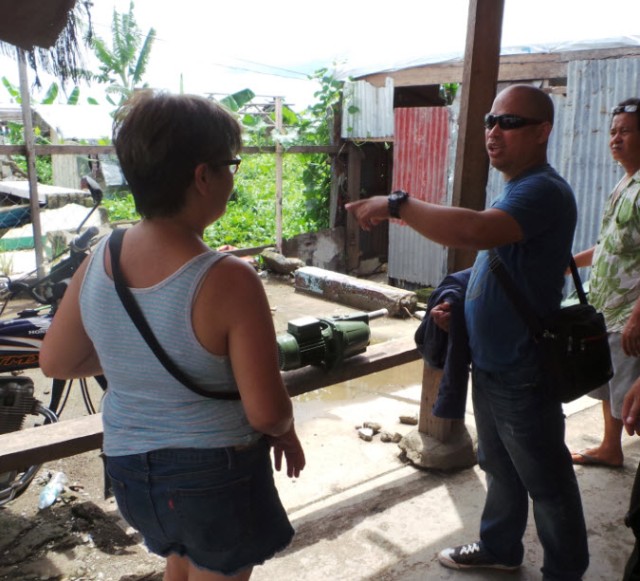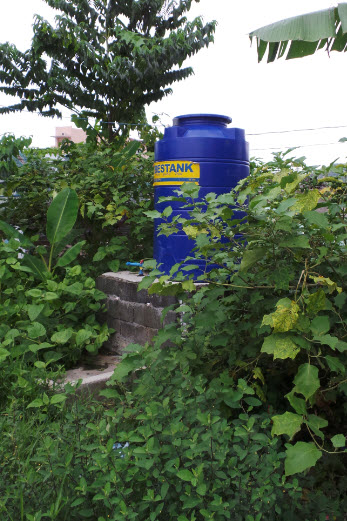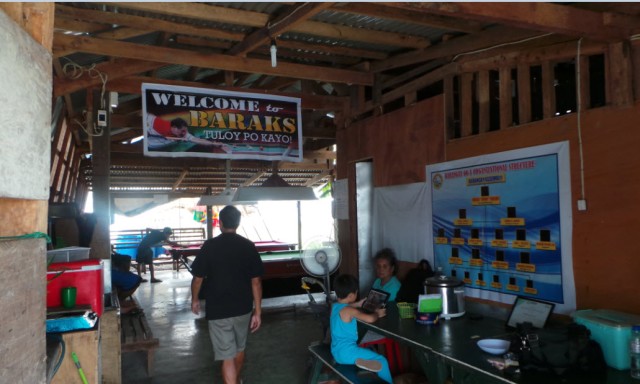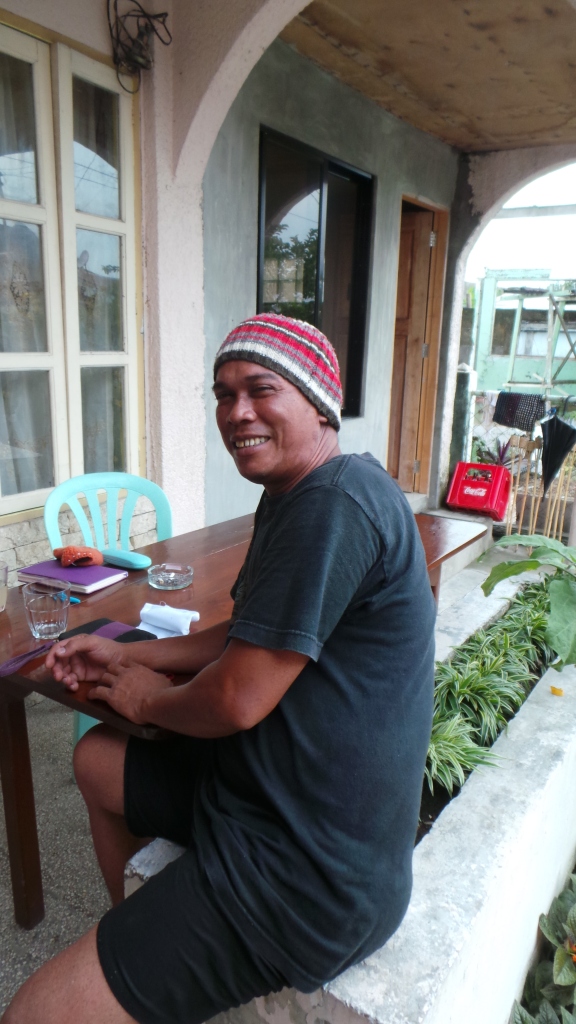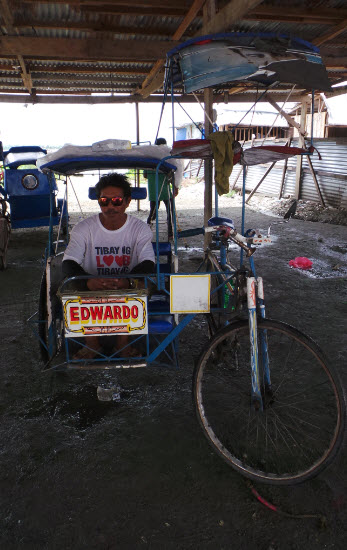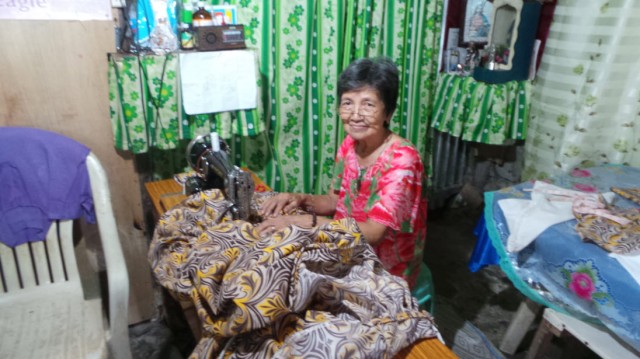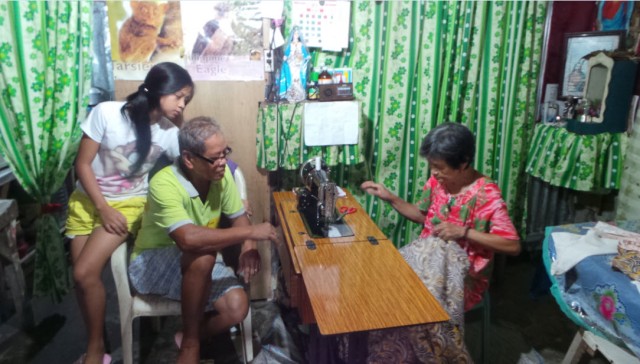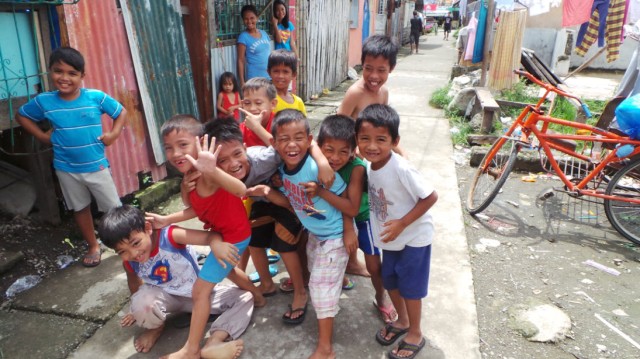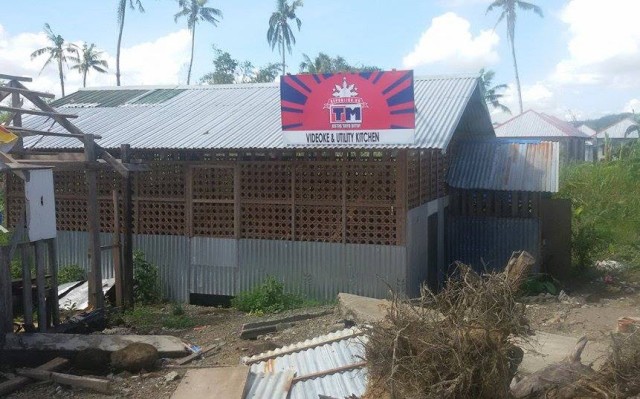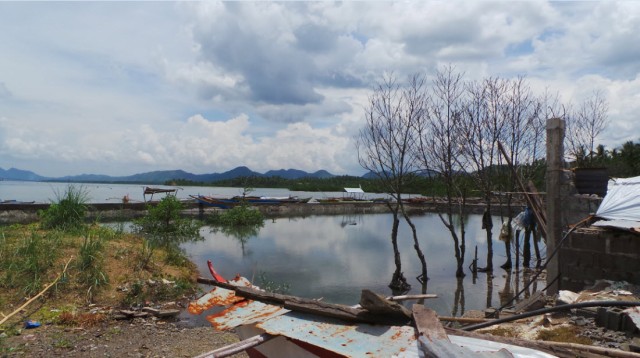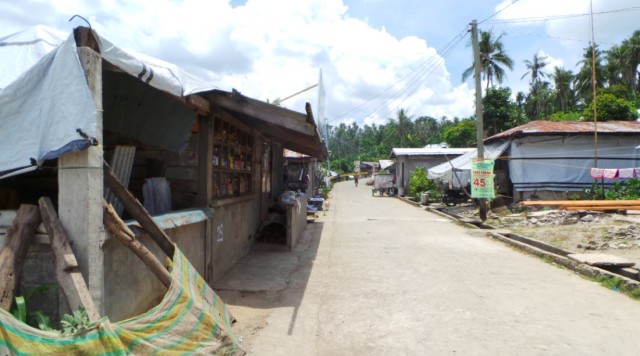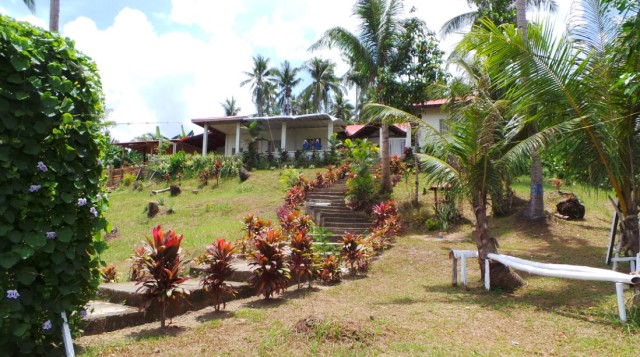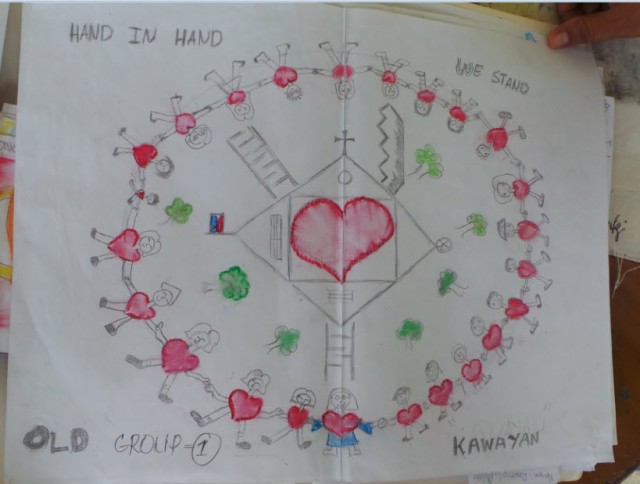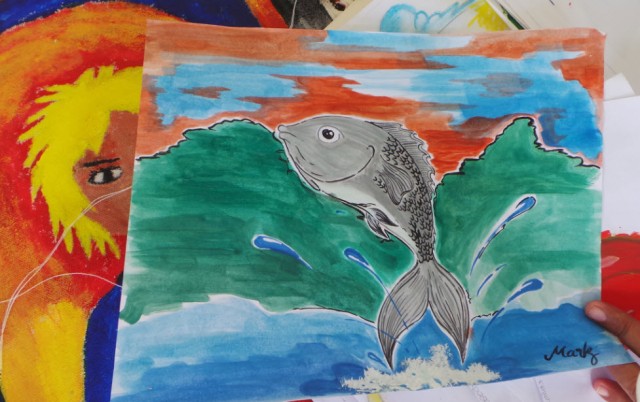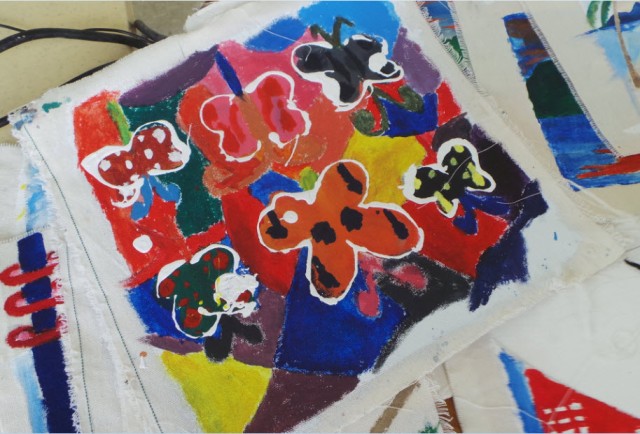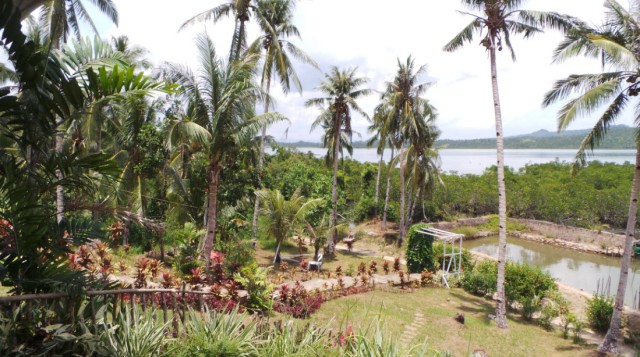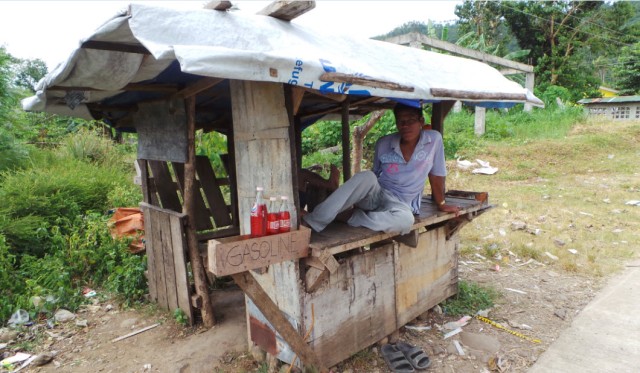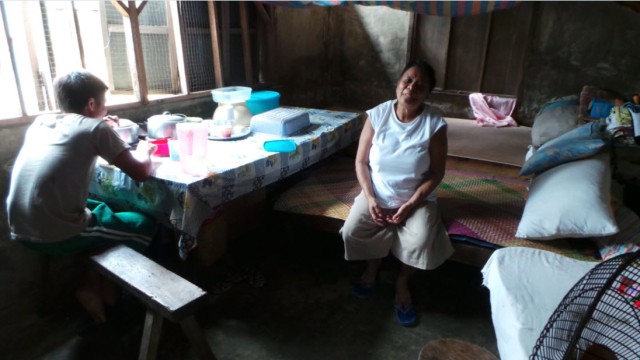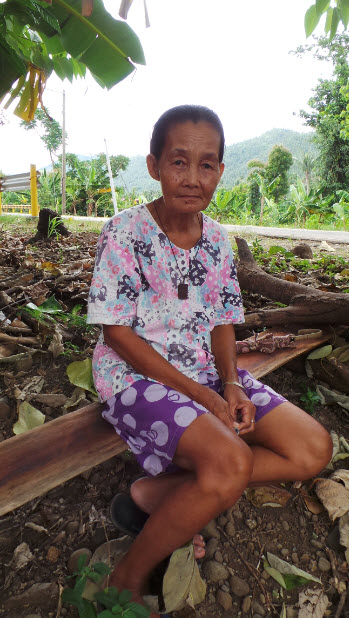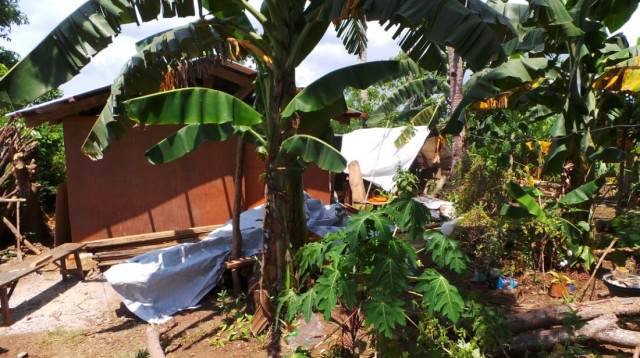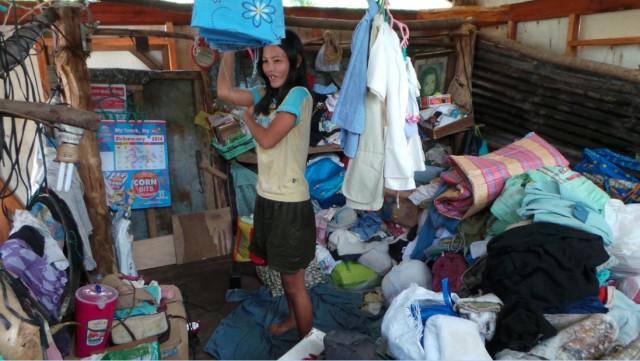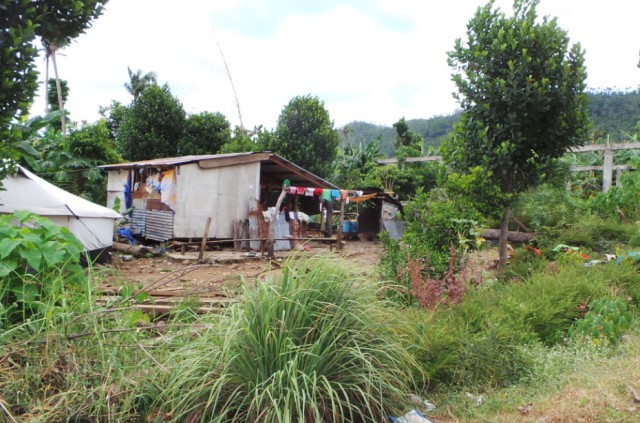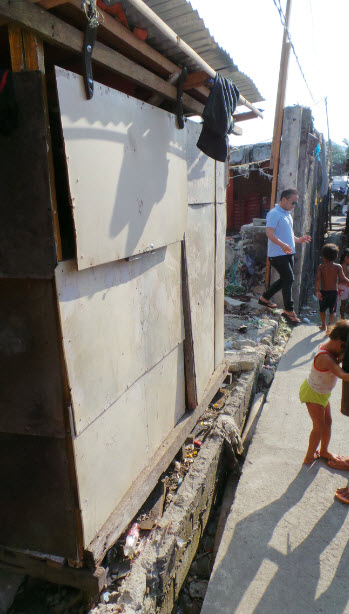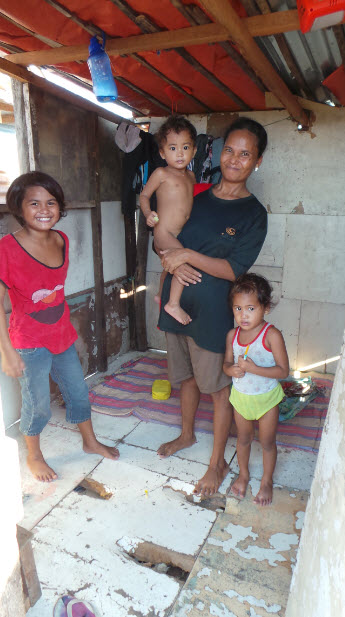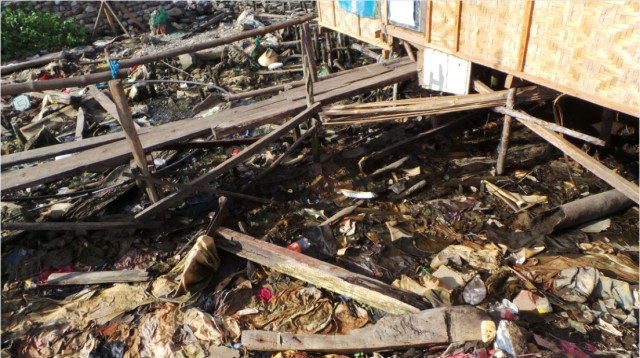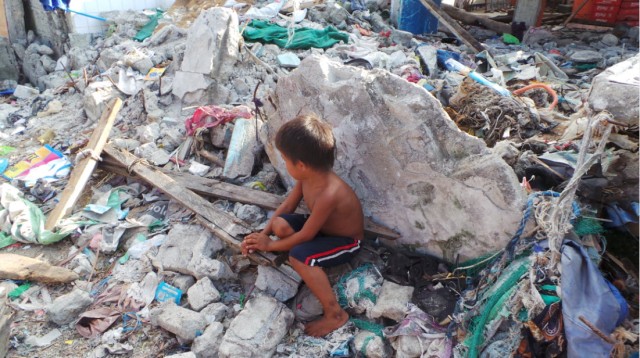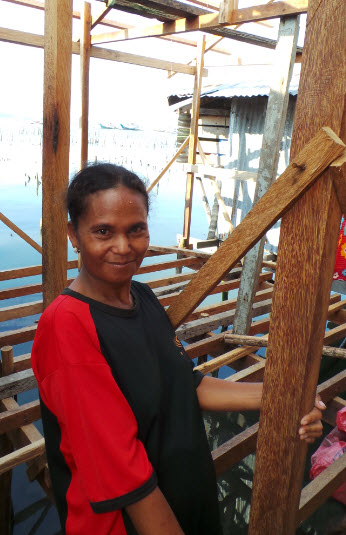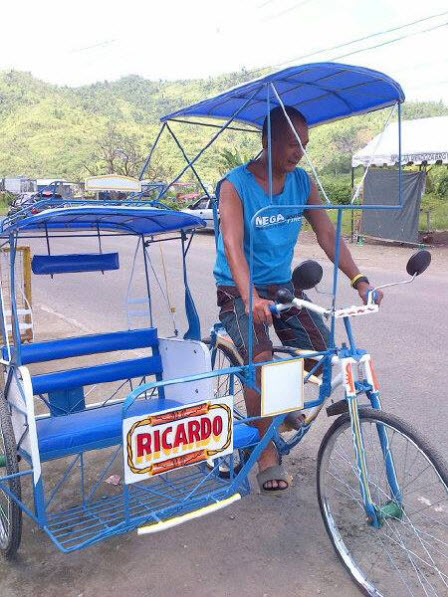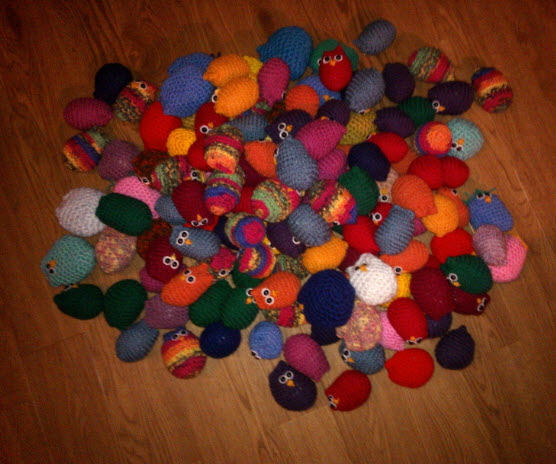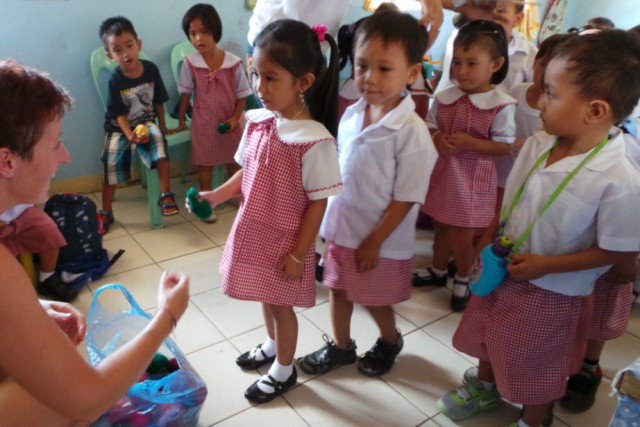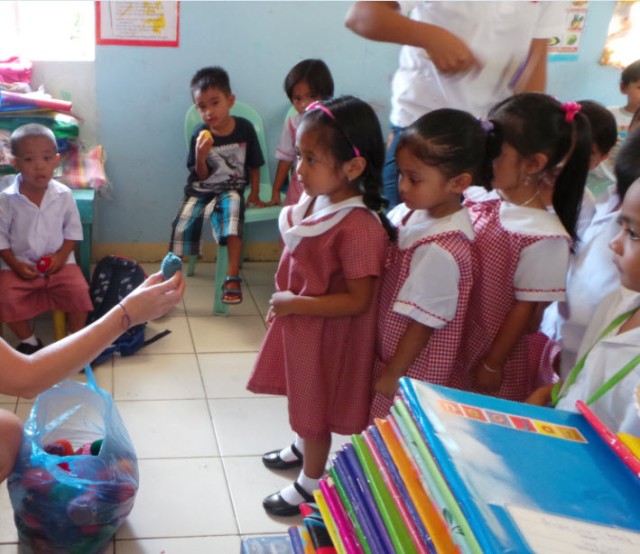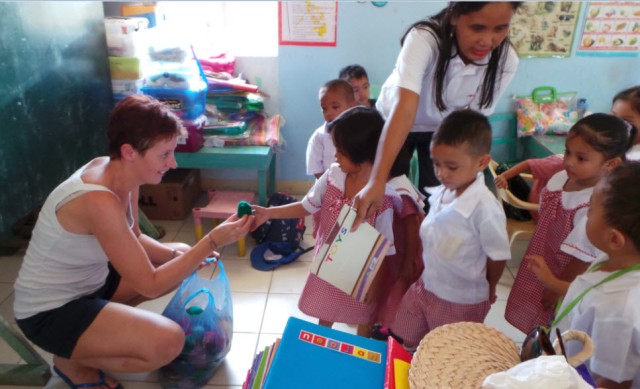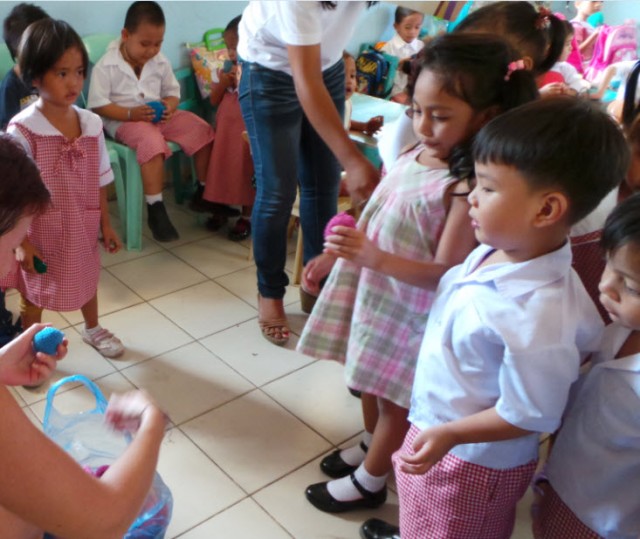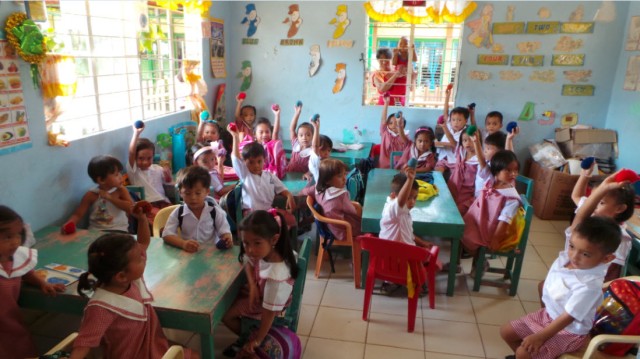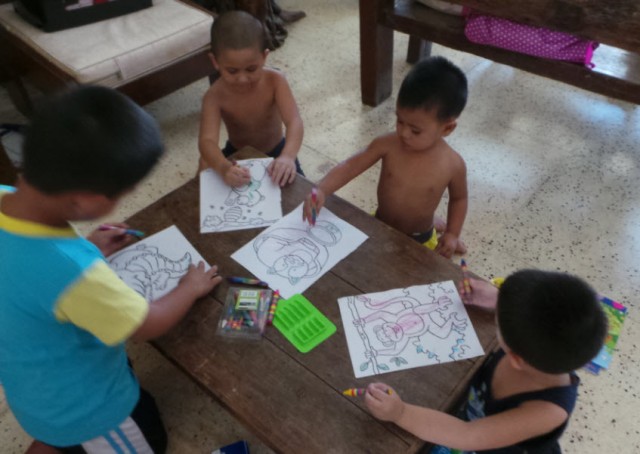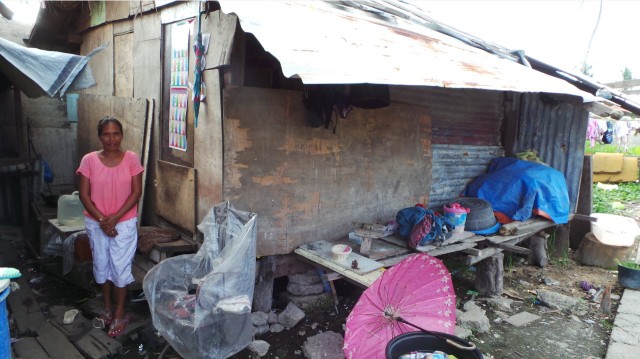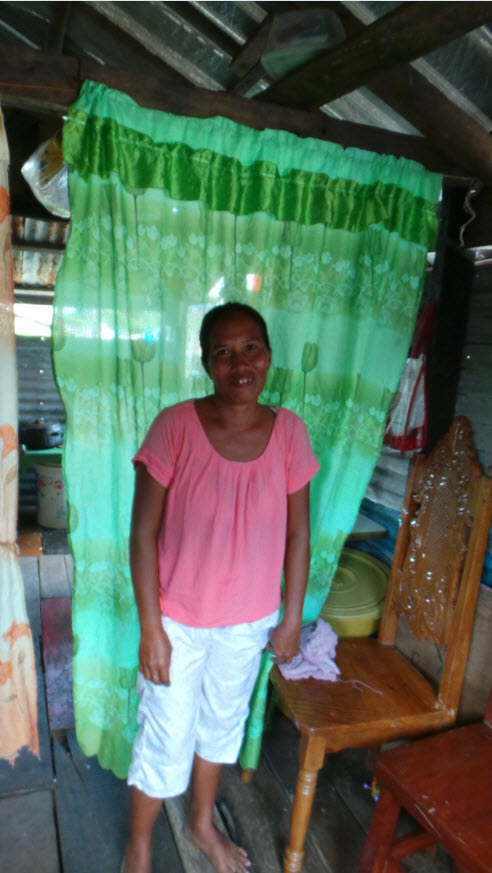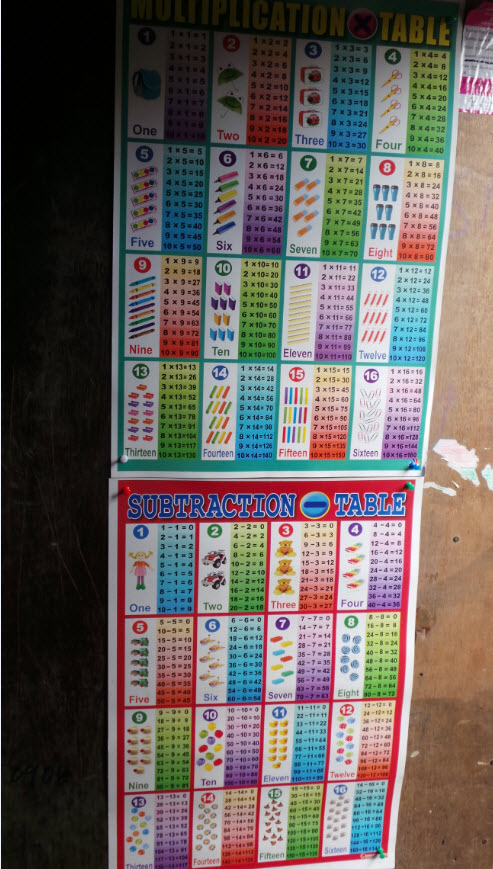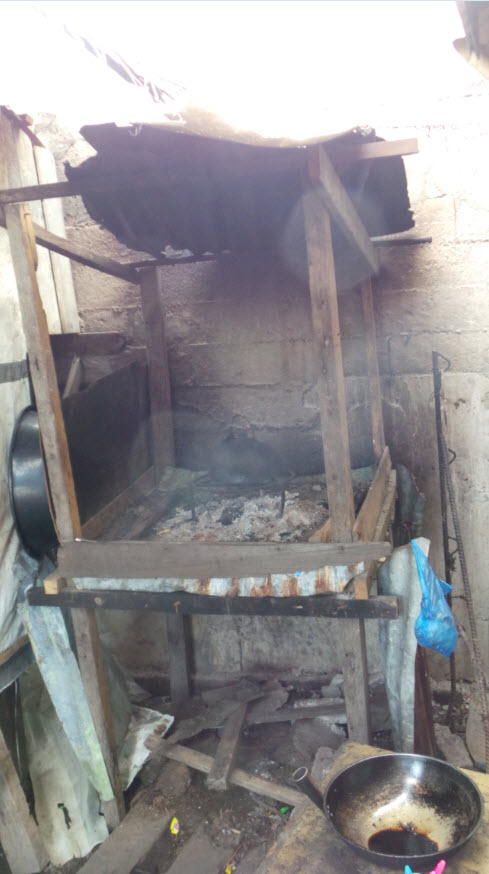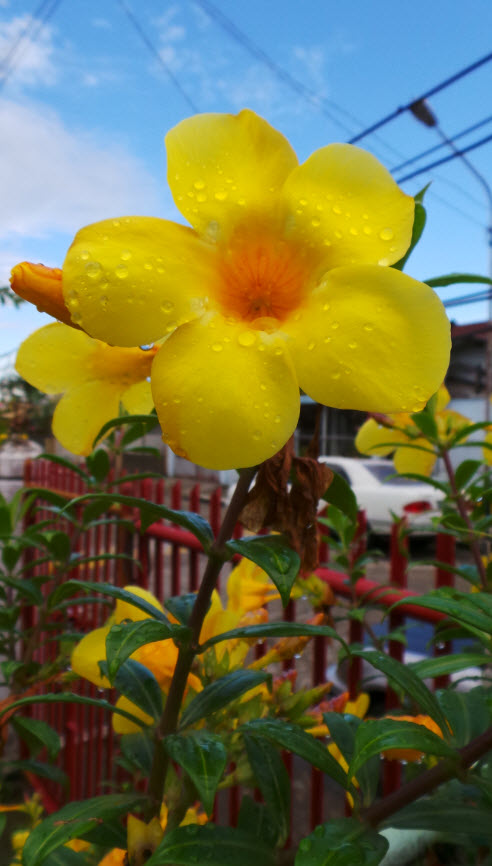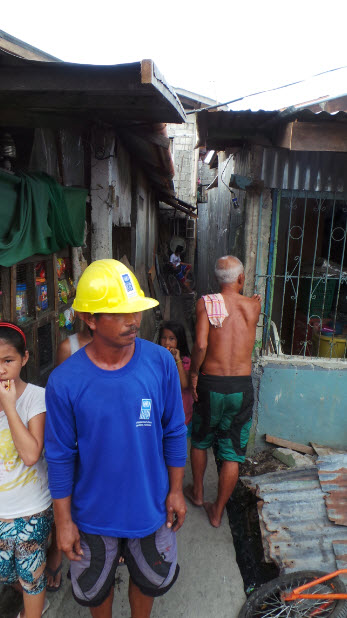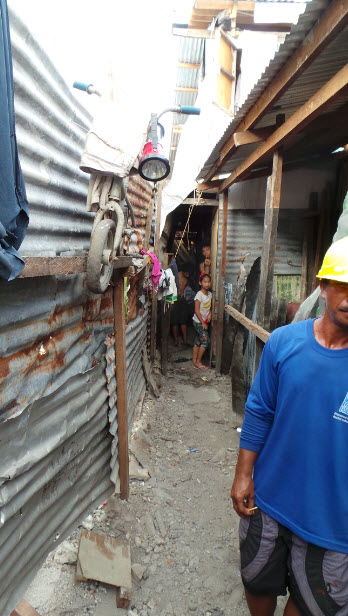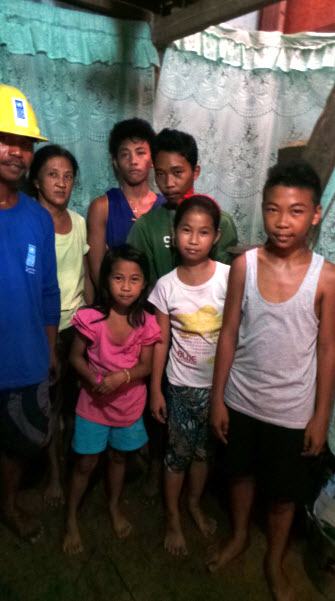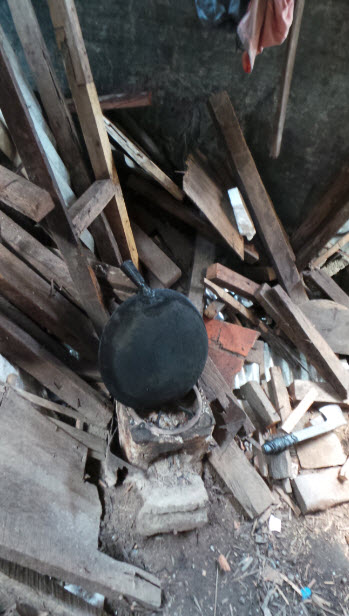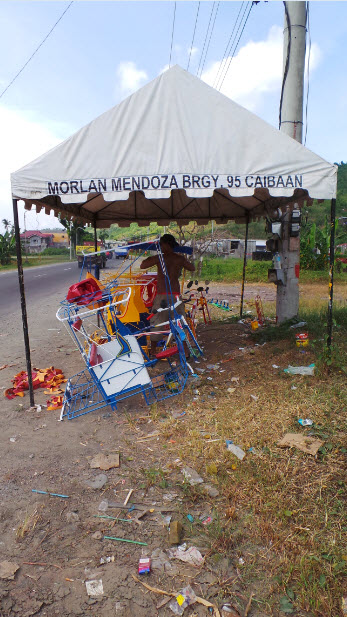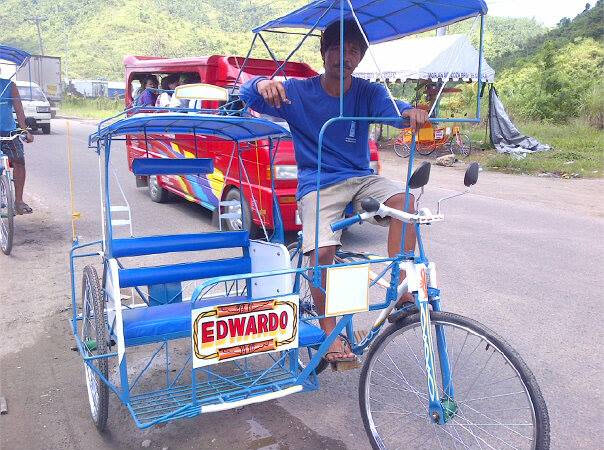A little over a year ago, when Helen and I were deciding who we should help with funds that friends had donated to the Helping Hands for Tacloban (HHFT) project, we did not have any elaborate requirements. We just wanted to help, period. Help in a way that the families wanted to be helped. We talked to them, and did what we could.
So – a year later – when Helen and I were both back in Tacloban and checking in on the families, we had a very simple success criterion. A single question, in fact: did we help your family at all – and if so, how?
Our visits were unannounced and without fanfare. We really just wanted to see if what we did with HHFT funds really helped the families. And because we were rather “unscientific” with our selection, we deliberately kept our expectations low – thinking, “Hey, if we helped one family, we would be happy.”
To our surprise, we were met with more success stories than disappointment. There were in fact tears of gratitude and joy and a lot of smiles.
Here are some of our updates (Helen will provide more on other beneficiaries).
The Rendezas:
I wanted to feature this family first as this was the family I was most impressed with for their entrepreneurship and enthusiasm. Last year, a mere three days after we (HHFT) gave them 12,000 pesos (around US$280), they had already completed constructing a sari-sari store that the wife Jennelyn was minding, and had started the husband (Rodrigo) with his scrap metals business.
A year later, Helen and I were very pleasantly surprised to find the sari-sari store not only thriving but that the family had saved enough to invest in two pigs (which they are raising to sell at a profit later), and a small poultry in front of their house.
They have earned enough that they were able to construct a small loft inside their one-room home to provide for private sleeping quarters for the family. All six children were in school and performing well.
When Helen and I visited, Rodrigo was not around (he’s always busy with his scrap metals) but Jennelyn proudly showed us what they had done with their home, and the money they have earned from the sari-sari store.
“Diri gud kami mangangalimot han iyo bulig ha amon,” (We will never forget the help you have given to us) – was what Jennelyn said to us again and again. We told her that all we did was to help a little bit but they did most of the heavy lifting themselves, that their success was really their doing. But she insisted that without HHFT’s help, and our belief in them, they would not be where they were now.
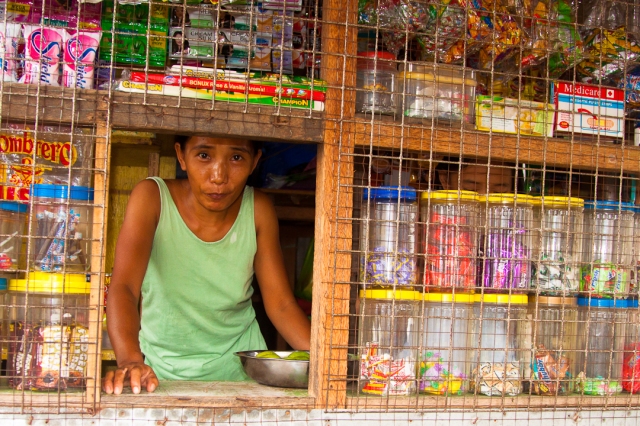
Jennelyn Rendeza in her thriving sari-sari store. June 2015.
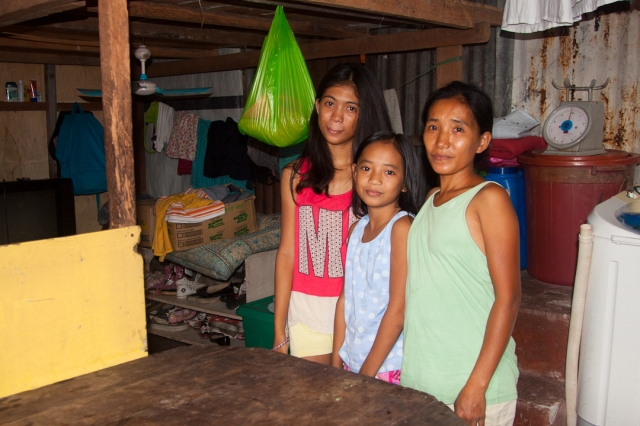
Jennelyn and her daughters inside their home – which now has loft for private sleeping quarters for the family.
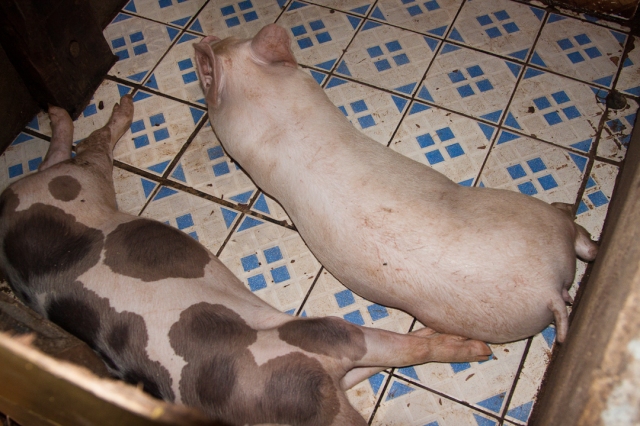
The Rendezas’ business has been thriving that they have been able to expand and buy pigs – which they are raising to sell at a profit later.
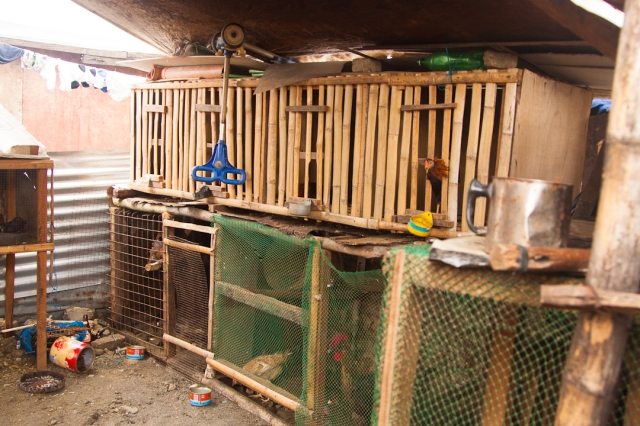
The Rendezas now also have a poultry in front of their home.
The Brazils:
HHFT gave Jun and Rita Brazil a new sewing machine in June last year and then, after Helen visited them in August, provided them with materials for a new roof.
When we visited their home in late June this year, only their daughter, Divina, was home. She recognized us immediately and graciously invited us in. She showed us the sewing machine that we had given the family last year, and how, with earnings in the past year, they had been able to construct a second floor bedroom where they now all sleep. The roof built from materials that HHFT provided was still intact.
Divina told us that his father still sews but has also found a new job managing a nearby beauty parlor. Divina is now learning how to sew in school as she wants to follow in her father’s footsteps. She showed us her new school clothes – all of which her father had sewn for her.
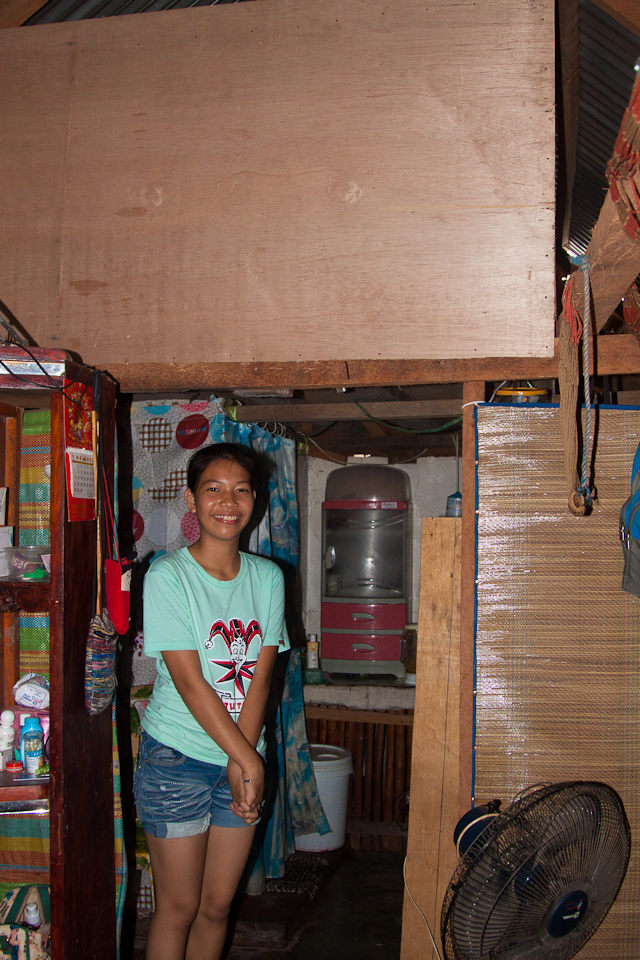
Divina Brazil shows off their home – which now has a second floor. HHFT gave them a sewing machine last year, and roofing materials.
Evelyn Hermo, the widow:
Last year, we gave Evelyn Hermo money for her to be able to start selling shrimps again in her neighborhood and then a few thousand pesos so she could fix up the home she shared with her daughter.
When Helen and I saw her a couple of weeks ago (we saw her at my younger brother Paul’s home during the Tacloban fiesta), she gave us a hug and tearily told us how her shrimp selling business has helped her send her daughter to school and how, with some of the earnings, she has been able to buy a pig which she has been raising to sell for a profit once it’s fully grown.
She is doing very well, she told us, and does not do laundry as much anymore as her shrimp selling gives her sufficient income for herself, her daughter, and even to help her older children who also have families on their own.
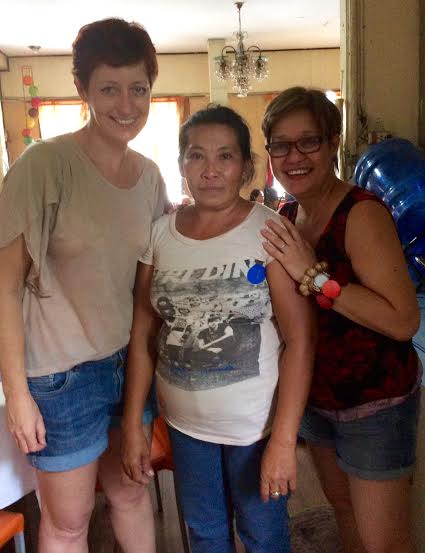
Evelyn Hermo with Helen and Jackie, June 30, 2015. We met up with her at my brother Paul’s house during the Tacloban fiesta. (I met her last year as she was my brother’s family’s laundrywoman.)
The Sampans:
Remember the family with eleven children who lived in a box of a house not much bigger than a regular office cubicle? Their main source of income last year was a small sari-sari store, the funds for which came from a high-interest loan that they were repaying everyday using more than half of a day’s income. HHFT gave them money to repay this loan, and some more to buy materials to fix up their home. A small amount was also given to buy school uniforms and shoes for one of their daughters who, in June last year, was staying home because the family simply could not afford to buy her anything for school.
When Helen met them in August, she also decided to provide them with a pedicab so that the father could bring the children to school everyday.
A year later, this family has moved to a transitional home provided by the government – a home that is 24 square meters in size, much bigger than their previous home. The sari-sari store is thriving after that loan was repaid, and has even expanded a bit. Some of the older children sleep there overnight as they now have the space. The daily income of the store has now doubled and provides for the family’s daily needs.
The pedicab has unfortunately been sold, however – the proceeds for which was used to buy a small motorbike to provide transportation for the family from their transitional home (over two kilometers away) to and from the Shed where their store is.
When we talked to Jocelyn, the wife, she proudly showed us her expanded store and insisted we take a bunch of bananas as a gesture of thanks. When we refused, she followed us around with it, insisting that we take it as she told us a few more stories of what our help has meant for her family. What it meant for their children to be able to go to school, and how relieved she was that they no longer had debts they had to repay.

The Sampans’ store has thrived after HHFT repaid the loan the family had in order to put it up after the typhoon.
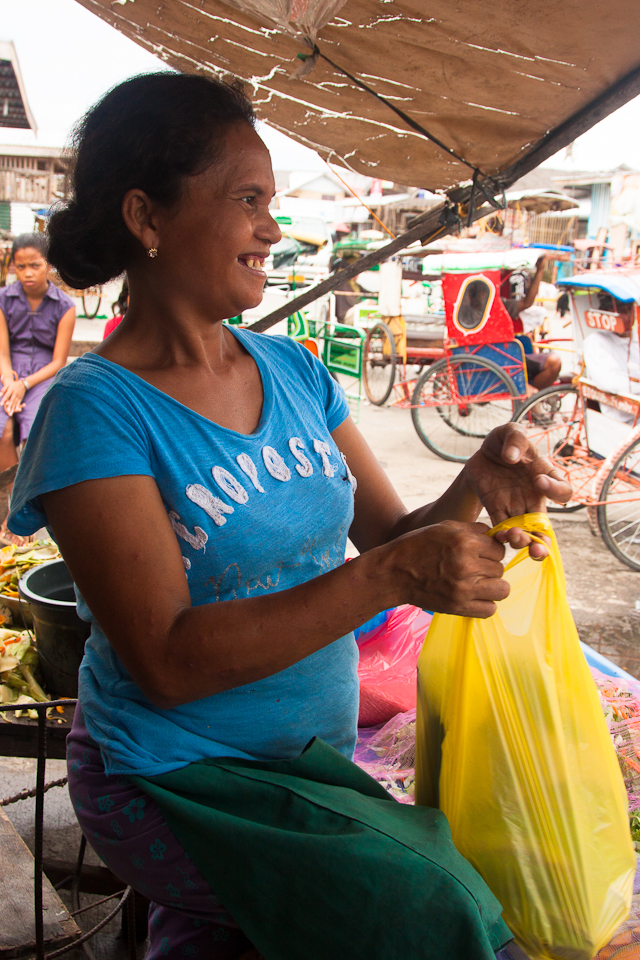
Jocelyn Sampan – mother of eleven – told us that all the younger children now go to school, and the store has been providing for the family’s basic daily needs.
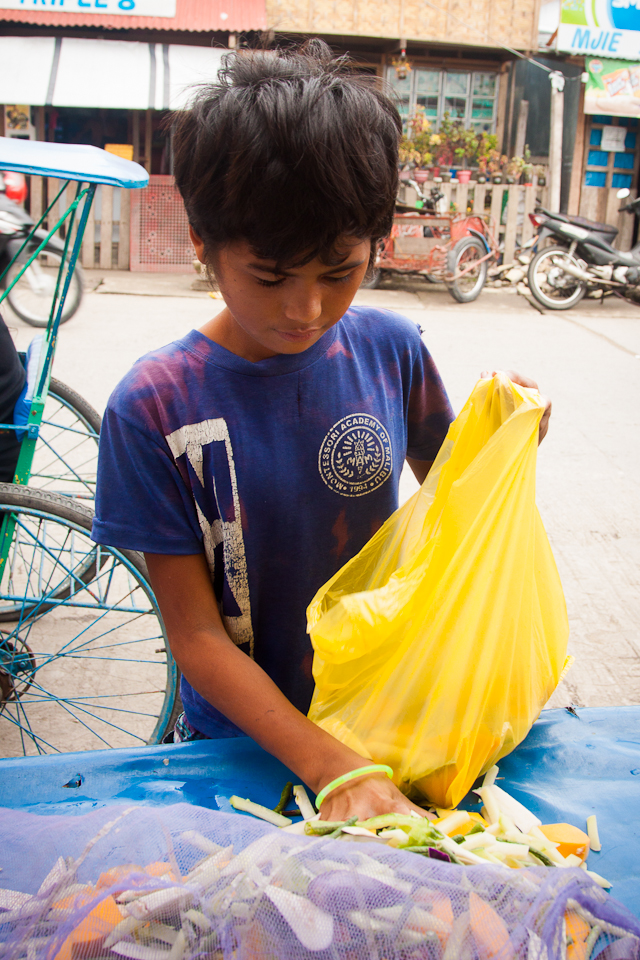
Rialyn, one of the Sampan daughters, helps in the family store. HHFT gave her money for school uniforms and shoes. She has continued attending school to this day.
The Amistosos (Mano Pinok and Mana Uni):
When we visited Mano Pinok in his usual vending place in a sidewalk near the Tacloban public market, we were delighted to see that he had more wares to sell. He was surprised to see us, but welcomed us with a big, big smile.
As he was updating us about his family his voice suddenly cracked and he became teary-eyed when he said, “Pastilan it akon pasalamat ha iyo. Bisan an sim pa la, kadako na nga bulig ha amon. Tapos, kadamo pa hin iyo gin-bulig.” (Your help has meant so much and I very am grateful. Even just with the roofing materials that you had provided, you already helped my family greatly. And yet, you still gave us more help than that.)
He invited us to visit his home where he said he had been able to make some expansion to allow more room for his family (his grown children and grandchildren live with him and his wife). So I did – on my last day in Tacloban.
With the proceeds from the pigs that HHFT had given him last year to raise, the Amistosos created more living space and now had a roof over their kitchen. Mana Uni (the wife – whom I saw during my home visit) also told us how they were able to get two grandchildren enrolled (one in college and another in high school.) And then they also were able to buy a new piglet that they are raising – just like the piglets that HHFT had provided the family last year.
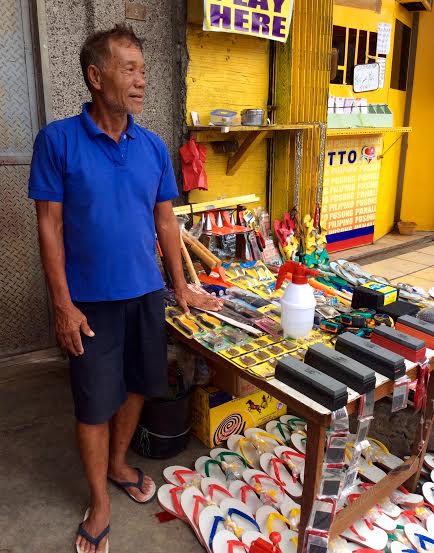
Mano Pinok in his sidewalk vending stall – where he was proudly showing us more wares to sell. All because of HHFT help, he said.
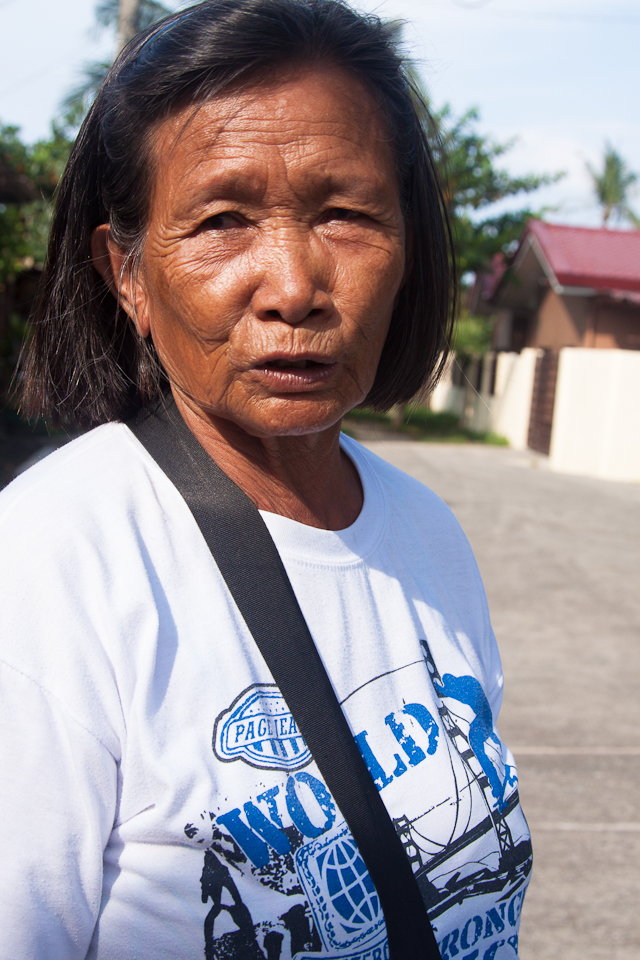
Mana Uni – doing well, except for cataract in one of her eyes that need surgery. She smiled though as she told me she was fine nonetheless.

The Amistoso home has now been expanded to allow more room for the extended family that live with Mano Pinok and Mana Uni.
The Candahug housewives:
Not all of the HHFT beneficiaries were success stories – and the update with the women in Candahug was a bit disappointing. The carenderia (small eatery) was not operational and Nimfa, the capitana, gave us several reasons: how two of their members couldn’t work there anymore because they gave birth, and how they had uncollected receivables (3,000 pesos) from a group of construction workers who left town without paying a centavo.
The structure is still there, however, and so were the TV, the videoke machine and the refrigerator. Helen and I urged the capitana to sell the TV and videoke machine, so they can re-start with the business – and make their business model as simple as possible so they can get profit. Capitana Nimfa promised us that she will meet with the other nine women so they can do exactly that.
The good news in Candahug was that the children we gave school uniform money to last year are still in school, and that the uniforms we had paid for were still being used by them.
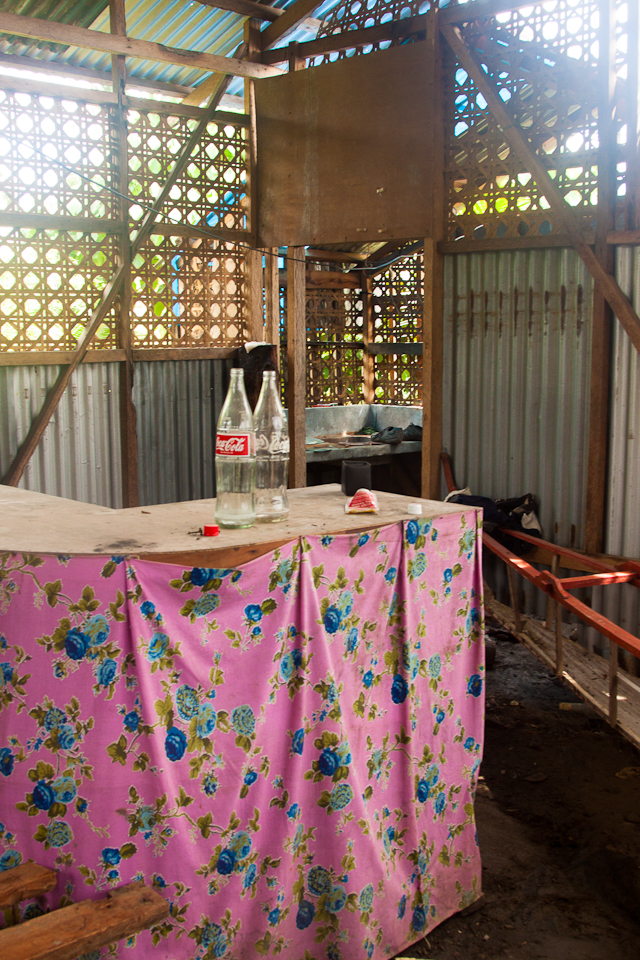
Inside the non-operational carenderia in Candahug.
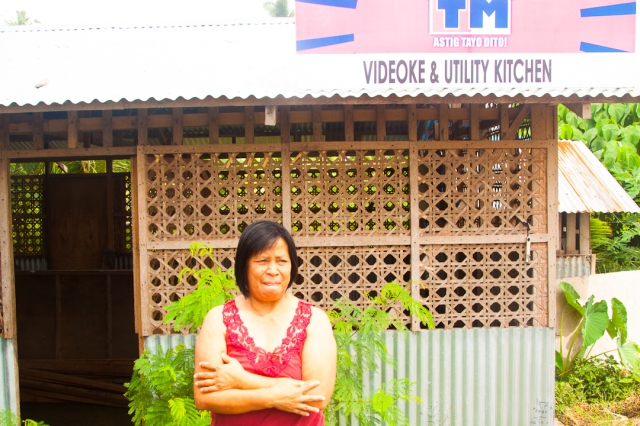
Capitana Nimfa promised us that she and the other women will try to revive the carenderia – after they sell the TV and video machine that HHFT had provided for them last year.
The Fabis:
Edith and Renato Fabi received 17,000 pesos (a little over US$400) last year to construct a concrete pig pen, buy two pigs and buy materials for the home they were trying to rebuild.
A year later, however, they had sold the pigs in order to finish up the house – which they had now moved into. Renato now works as a pastor in a religious community and earns about 5,000 pesos a month, less transportation expenses.
When I spoke to Edith, she said that they ran out of money to rebuild the house so they decided to sell the pigs in January. Now they live in a much bigger space – which helped them, she said, in the couple of typhoons that came in the past few months. At least they no longer live in the makeshift shed they were living in before – which was easily destroyed in a typhoon earlier this year.
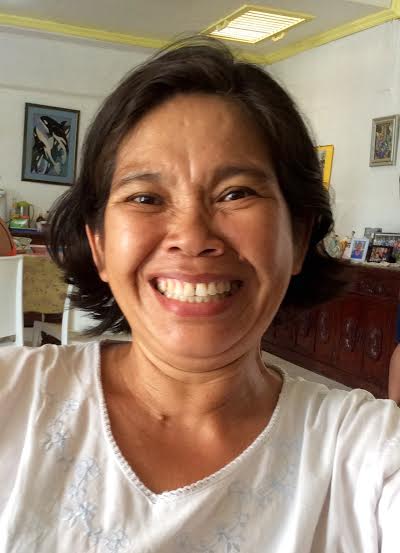
Edith came to see me at my mother’s house and gave me an update on her family.
So did HHFT help the families? Indeed it has. We got so much “pasasalamat” (expression of gratitude) from the families – and we relay them back to you our friends who supported us in this venture. Salamat nga madamo ha iyo ngatanan! (Thank you so much to you all!)
At some point we will tell you about what we are doing with Sister Helen in Old Kawayn in Tacloban City – with the proceeds from TR’s Community Champion award. Helen will also have a lot more stories of her trip back to Tacloban – shorter though this time, but hectic.
’til then! Salamat! -Jackie
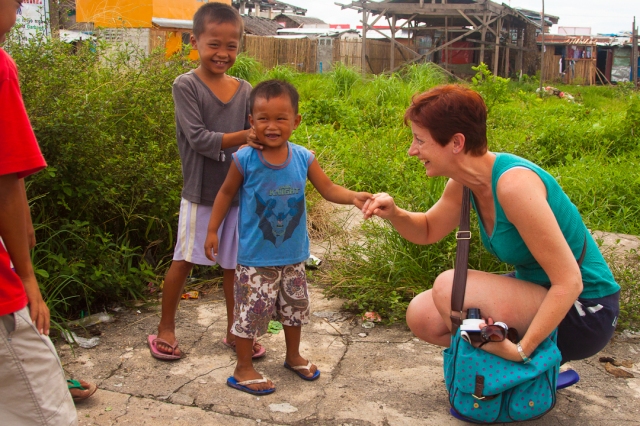
Helen W with some her fans at The Shed in Tacloban.

